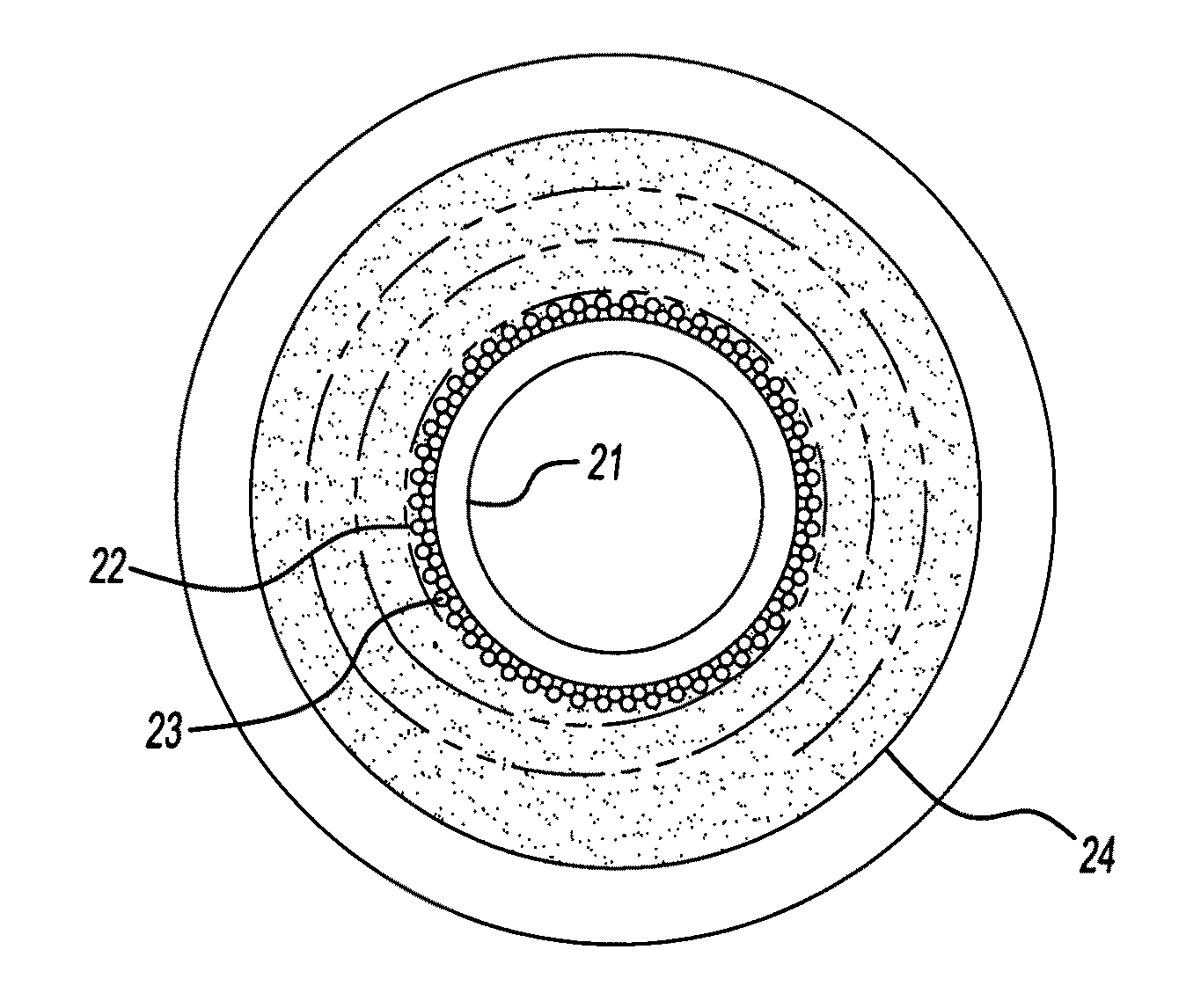Membrane module
a membrane module and fiber technology, applied in the field of hollow fiber membrane modules, can solve the problems of increasing the amount of membrane used, increasing the operating cost of the module, increasing the lumen and shell side pressure, etc., and reducing the diameter and packing fraction of the module, reducing the amount of fiber within the tubesheet, and increasing the wind angle
- Summary
- Abstract
- Description
- Claims
- Application Information
AI Technical Summary
Benefits of technology
Problems solved by technology
Method used
Image
Examples
Embodiment Construction
Helically wound bore-side feed internal sweep membrane air dryer modules were manufactured according to the parameters in the Table 1. The hollow fibers used were manufactured using the dry-wet phase inversion process. Water, a coagulant, was used as the bore fluid and a polymer solution containing solvent and non-solvent was pumped into the annulus of the hollow fiber spinneret. The fiber was processed according to procedures known in the art and then used to manufacture the modules. The resulting asymmetric porous hollow fiber was then coated on its inner diameter with a hydrophilic polymer.
TABLE 1Module Design ParametersAverageStandardLengthActive LengthDeviation inActive SurfaceVariation(cm)Length (cm)Area (cm2)Module A13%172.26.051874Module B70%171.829.41878
During this winding process, a cylindrical core was used and the angle at which the fiber was laid down was increased in the vicinity of the tubesheet region on each end of the module such that the diameter of the fiber bund...
PUM
| Property | Measurement | Unit |
|---|---|---|
| pressures | aaaaa | aaaaa |
| surface area | aaaaa | aaaaa |
| diameter | aaaaa | aaaaa |
Abstract
Description
Claims
Application Information
 Login to View More
Login to View More - R&D
- Intellectual Property
- Life Sciences
- Materials
- Tech Scout
- Unparalleled Data Quality
- Higher Quality Content
- 60% Fewer Hallucinations
Browse by: Latest US Patents, China's latest patents, Technical Efficacy Thesaurus, Application Domain, Technology Topic, Popular Technical Reports.
© 2025 PatSnap. All rights reserved.Legal|Privacy policy|Modern Slavery Act Transparency Statement|Sitemap|About US| Contact US: help@patsnap.com



